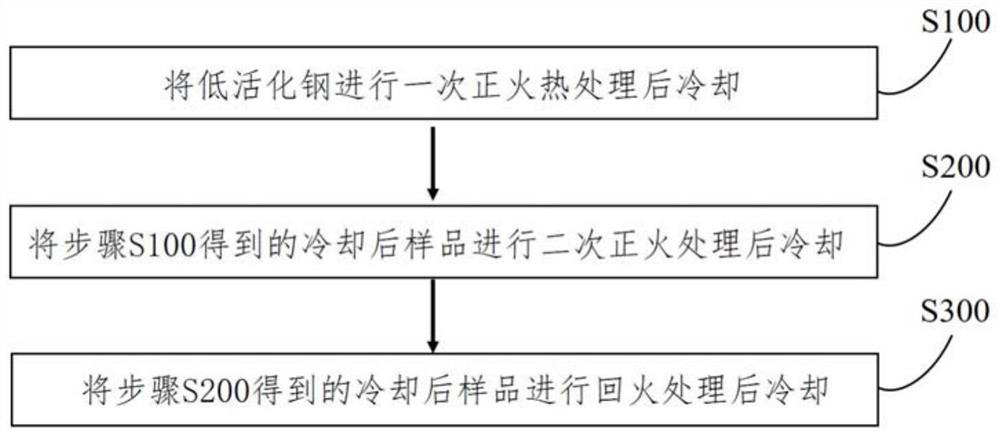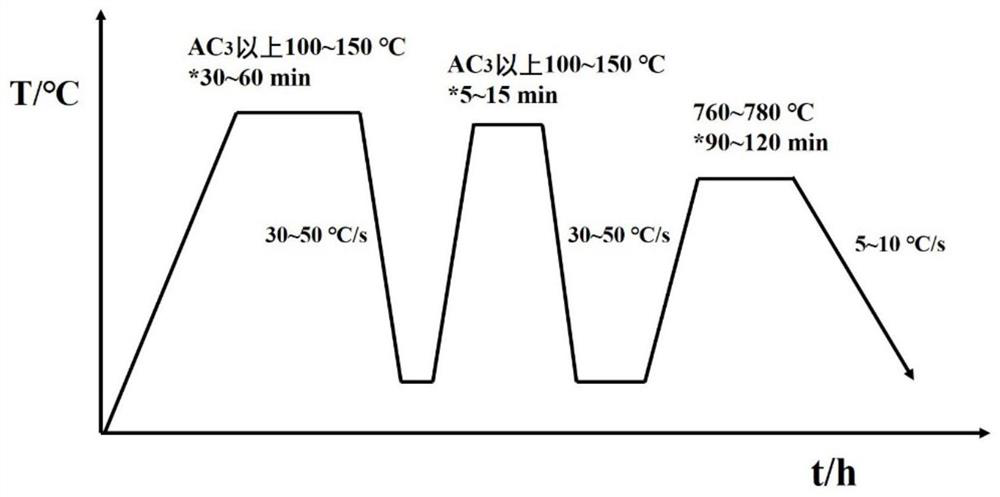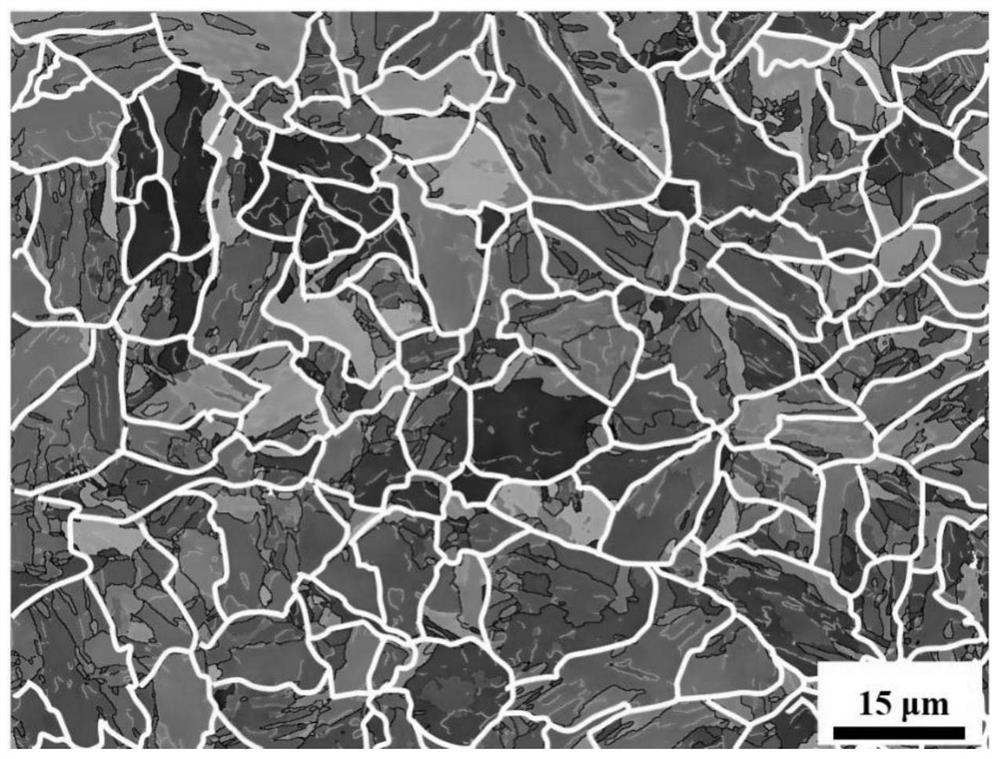Method for heat treatment of low-activation steel
A low-activation steel and normalizing technology, applied in the field of low-activation steel, can solve the problems of material strength and toughness decline, lath roughening, and hindering the migration of tempered martensite lath boundaries.
- Summary
- Abstract
- Description
- Claims
- Application Information
AI Technical Summary
Problems solved by technology
Method used
Image
Examples
Embodiment 1
[0052] The composition of the low-activation steel is shown in Table 1. After the low-activation steel was kept in a furnace at 1000°C for 30 minutes, it was water-cooled to room temperature (cooling rate was 40°C / s); After 10 minutes of internal heat preservation, water cooling to room temperature (cooling rate of 40°C / s); and finally tempering at 760°C for 90 minutes, air cooling to room temperature (cooling rate of 7°C / s).
Embodiment 2
[0054] The composition of the low-activation steel is shown in Table 1. After the low-activation steel was kept in a furnace at 1020°C for 40 minutes, it was water-cooled to room temperature (cooling rate was 40°C / s); then the low-activation steel was placed in a furnace heated to 1000°C After 10 minutes of internal heat preservation, water cooling to room temperature (cooling rate of 40°C / s); finally tempering at 760°C for 100 minutes, air cooling to room temperature (cooling rate of 7°C / s).
Embodiment 3
[0056] The composition of the low-activation steel is shown in Table 1. After the low-activation steel was kept in a furnace at 1030°C for 50 minutes, it was water-cooled to room temperature (cooling rate was 40°C / s); then the low-activation steel was placed in a furnace heated to 1020°C After 10 minutes of internal heat preservation, water cooling to room temperature (cooling rate of 40°C / s); finally, after tempering at 770°C for 100 minutes, air cooling to room temperature (cooling rate of 7°C / s).
PUM
 Login to View More
Login to View More Abstract
Description
Claims
Application Information
 Login to View More
Login to View More - R&D
- Intellectual Property
- Life Sciences
- Materials
- Tech Scout
- Unparalleled Data Quality
- Higher Quality Content
- 60% Fewer Hallucinations
Browse by: Latest US Patents, China's latest patents, Technical Efficacy Thesaurus, Application Domain, Technology Topic, Popular Technical Reports.
© 2025 PatSnap. All rights reserved.Legal|Privacy policy|Modern Slavery Act Transparency Statement|Sitemap|About US| Contact US: help@patsnap.com



